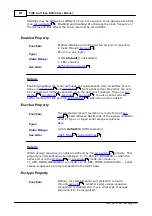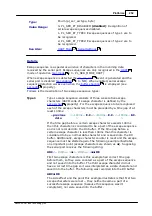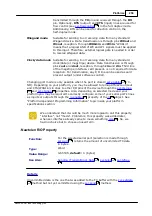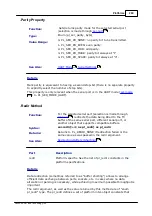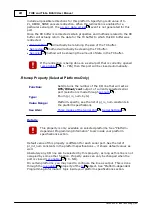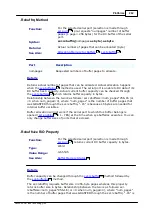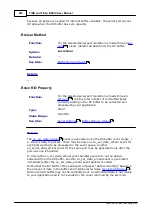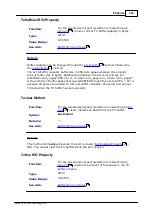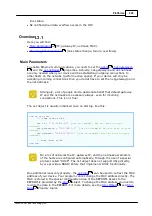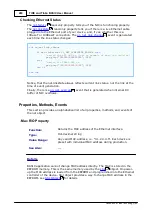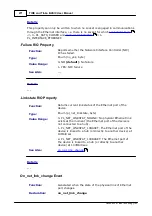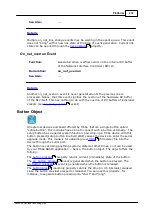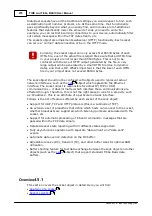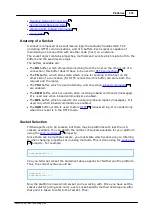
262
Platforms
©2000-2008 Tibbo Technology Inc.
.Rxbuffrq Method
Function:
For the selected serial port (selection is made through
) pre-requests "numpages" number of buffer
pages (1 page= 256 bytes) for the RX buffer of the serial
port.
Syntax:
ser.rxbuffrq(numpages as byte) as byte
Returns:
Actual number of pages that can be allocated (byte)
See Also:
,
Part
Description
numpages
Requested numbers of buffer pages to allocate.
Details
Returns actual number of pages that can be allocated. Actual allocation happens
when the
method is used. The serial port is unable to RX data if its
RX buffer has 0 capacity. Actual current buffer capacity can be checked through
the
which returns buffer capacity in bytes.
Relationship between the two is as follows: ser.rxbuffsize=num_pages*256-16 (or
=0 when num_pages=0), where "num_pages" is the number of buffer pages that
was GRANTED through the ser.rxbuffrq. "-16" is because 16 bytes are needed for
internal buffer variables.
Buffer allocation will not work if the serial port to which this buffer belongs is
opened (
= 1- YES) at the time when sys.buffalloc executes. You can
only change buffer sizes of ports that are closed.
.Rxbuffsize R/O Property
Function:
For the selected serial port (selection is made through
) returns current RX buffer capacity in bytes.
Type:
Word
Value Range:
0-65535
See Also:
Details
Buffer capacity can be changed through the
method followed by
method.
The ser.rxbuffrq requests buffer size in 256-byte pages whereas this property
returns buffer size in bytes. Relationship between the two is as follows: ser.
rxbuffsize=num_pages*256-16 (or =0 when num_pages=0), where "num_pages"
is the number of buffer pages that was GRANTED through the ser.rxbuffrq. "-16" is
257
239
265
217
262
251
257
240
262
217




